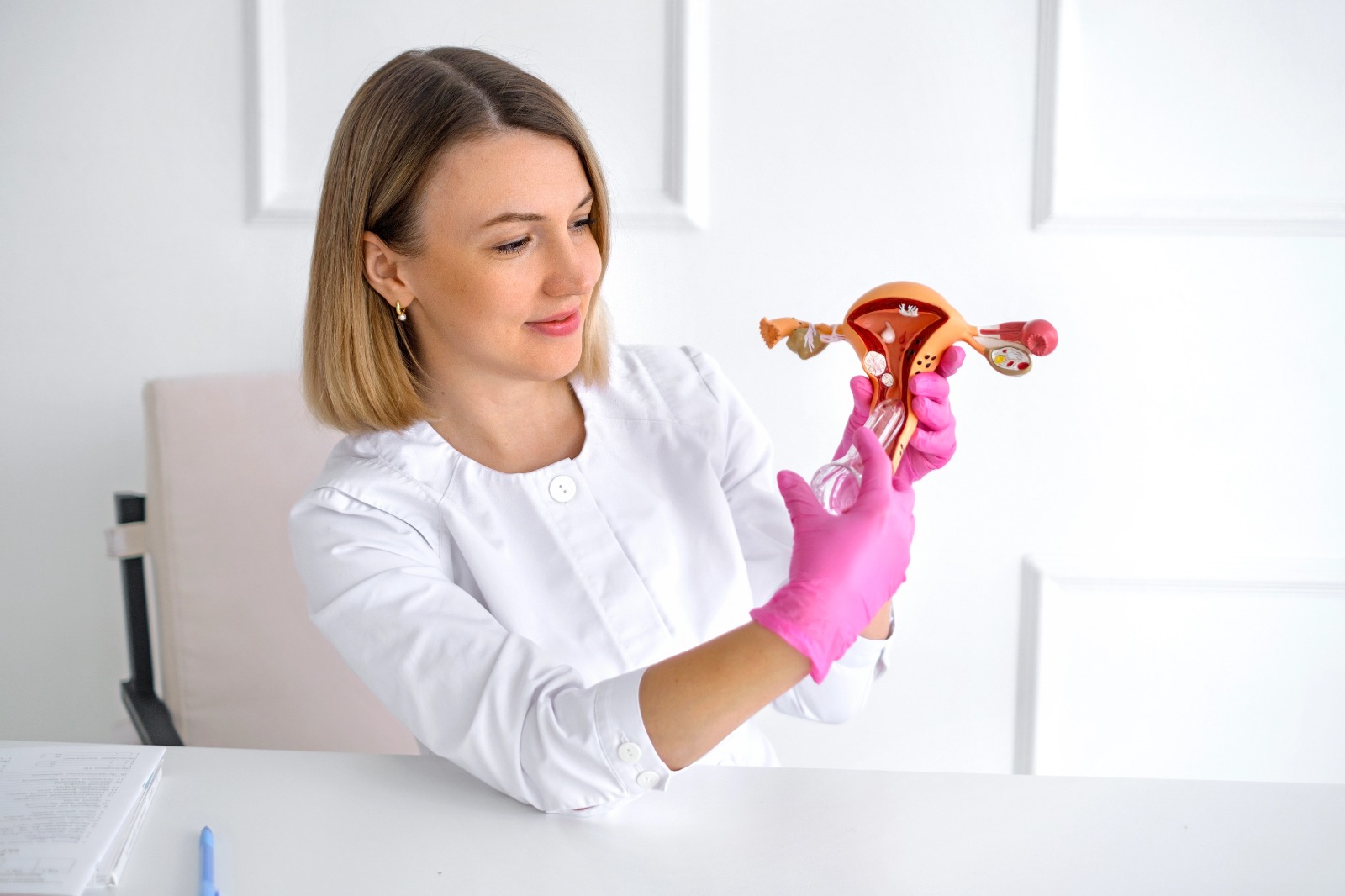What is Uterine and Vaginal Prolapse?
Pelvic health is rarely talked about openly, yet it affects millions of women worldwide. In this guest article, Dr. Nick sheds light on uterine and vaginal prolapse.
Where is the pelvis? What organs are there?
It can be confusing when clinicians talk about the pelvis, because it can refer to two very different things. Oftentimes the word is used to refer to the set of large bones that connect your upper body to your legs. In Women’s Health, when people use the term “pelvis” they are most often referring to the space in the lower half of your abdominal cavity that contains all of your reproductive organs (the ovaries, tubes, uterus, cervix, vagina, and vulva) and also the bladder part of the colon, the rectum and small intestines.
Supporting all these organs is the job of your “pelvic floor”. These muscles ligaments and tendons have a very challenging job. They have to bear the weight of the entire contents of your abdomen including the pelvic organs plus the liver stomach and small intestines but it also has to allow urine, faeces, and babies to pass through on the way from the inside of the body to the outside of the body.
What is uterine and uterine and vaginal prolapse?
Uterine and vaginal prolapse (which clinician’s shorten to “uterovaginal prolapse”) happens because the muscles and ligaments in your pelvis stretch with age, pregnancy, childbirth and frequent heavy exertion. If your pelvic floor muscles and connective tissue weaken enough, your uterus, urethra, bladder, or rectum become more likely to drop down into your vagina and can even bulge out of your vagina.
Four types of uterine and vaginal prolapse
Doctors typically think about prolapse in 4 categories:
- Anterior prolapse – Your bladder bulges into the front wall of your vagina
- Uterine prolapse – Your uterus bulges into your vagina
- Vaginal vault prolapse – The top of your vagina sags down after your uterus has been removed
- Posterior wall prolapse – Your rectum bulges into the back wall of your vagina
Each person can have different combination of bulges from one or more of the organs in your pelvis.
How likely is prolapse during perimenopause and menopause?
While uterine and vaginal prolapse can happen at any time during your life, it is most commonly diagnosed in women who are between 50 and 80 years old. You are more at risk to have some form of prolapse during menopause and postmenopause if you had a full-term pregnancy. You also have more risk if you have had one or more vaginal deliveries compared to only C-sections. This likelihood increases for those who have had more extensive tears during delivery and required forceps or vacuum delivery.
Signs of pelvic organ prolapse
A feeling of heaviness in your pelvis or vagina – usually worse when standing, or at the end of the day
A sensation of tissue bulging from your vagina. Seeing a ball or balloon bulging from the vagina when you strain
Problems peeing and/or completing bowel movements. More frequent UTI’s
Pain, discomfort, slight bleeding during or after vaginal intercourse
Sometimes, menopause prolapse has no symptoms and is found during a gynecological examination carried out for another reason. In this case, if you have no symptoms, then the “internal prolapse” does not signify any problem and does not need treatment.
Uterine and vaginal prolapse treatment
The first thing to do is talk to your healthcare provider about your symptoms as a pelvic examination is usually required to properly diagnose prolapse. They may recommend:
Pelvic floor exercises
You can do them anywhere and they are effective in strengthening your pelvic floor. It’s never too early to start doing them! The most important thing is accuracy – learning how to do the pelvic floor exercises properly – and consistency, remembering to do them every day.
Estrogen
If your prolapse is mild it may be recommended that you take estrogen in the form of a cream, or tablet you insert into your vagina or a vaginal ring.
A pessary is a silicone ring that comes in several shapes and sizes and supports your vaginal walls and pelvic organs. It is fitted by a specialist nurse or gynecologist.
Surgery
If the symptoms from your prolapse continue to be bothersome even after initial treatments, your healthcare provider may refer you to a urogynecologist – a healthcare provider who specializes in problems like prolapse, incontinence, and bladder pain. They may talk to you about surgical repair to lift and support your pelvic organs or a hysterectomy if you have a prolapsed uterus and you do not want any more kids.
POP’s impact on your emotional health and quality of life
In addition to the bothersome physical symptoms of POP, it can have a strong emotional impact and greatly reduce quality of life. It is common to feel embarrassment, shame, or sadness about your pelvic hernias. Worry about leakage or bulging may cause women to avoid social events or intimacy. It can cause women to feel unattractive, worry about whether they are “too loose” to satisfy their partner and limit their own satisfaction, leading to fear or discomfort during sex. The loss of control over one’s body can lead to frustration or even depression. However, POP is not your fault. It is a common result of childbirth trauma and daily wear and tear. These challenges often make people feel isolated or less confident. Effective treatment and support can help people manage these feelings.
Do you want to learn more? Check out these links to trusted sources of information about pelvic health:
https://www.mayoclinic.org/diseases-conditions/pelvic-organ-prolapse/symptoms-causes/syc-20360557
https://my.clevelandclinic.org/health/diseases/24046-pelvic-organ-prolapse
https://www.yourpelvicfloor.org/conditions/pelvic-organ-prolapse/
FAQs
As you age, your muscles and tissues weaken and this is worsened by the effect of decreasing estrogen during the menopause journey.
Pelvic organ prolapse is not life-threatening but can cause pain, disrupt bowel and bladder function, and make sex uncomfortable.
Although it’s not life-threatening, prolapse can affect your quality of life. It can be uncomfortable and a bit embarrassing and may lead you to avoid social events – especially if you haven’t found a treatment that works for you.
You should see a healthcare provider when your symptoms are uncomfortable and affect your daily life. You should also see your healthcare provider if you notice a lump or bulge at the entrance to your vagina.

Dr. Abraham Morse






